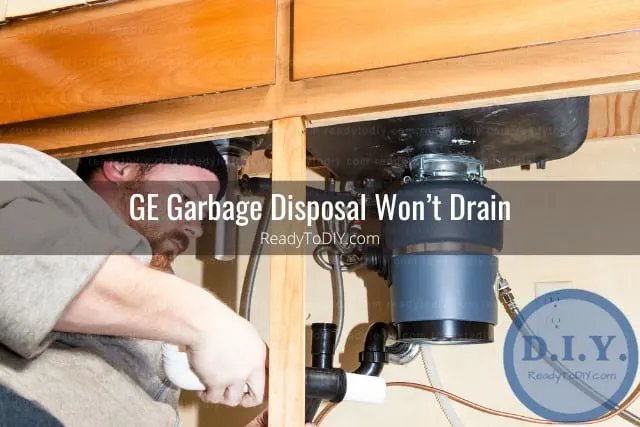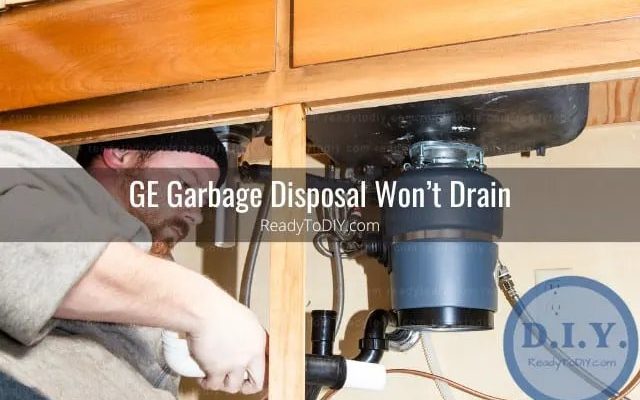
It’s kind of like a car dashboard light coming on when there’s something wrong with the engine. But instead of a mechanic, you’re the expert here! Don’t worry, though; tackling this issue doesn’t require a deep dive into an engineer’s manual. You just need a little guidance and maybe some everyday tools. In this guide, I’ll walk you through the common causes of this ‘OE’ error code and how you can fix them using straightforward, beginner-friendly steps. So, roll up your sleeves, and let’s jump right in.
Understanding the ‘OE’ Error Code
First things first: what is this ‘OE’ code all about? The ‘OE’ error essentially stands for “Operating Error.” When the disposal encounters an issue that it can’t handle automatically, it flashes this code as a kind of alert system. Think of it as the device’s way of waving a small white flag and asking for help. It usually means the disposal is struggling with something it wasn’t designed to process or there might be an internal glitch.
So why do these issues crop up in the first place? Sometimes, it’s as simple as putting the wrong kind of waste down the chute. Maybe you treated the disposal like a trash can and tossed in a corn cob or some chicken bones. You might think of these as tiny ninjas trying to jam the blades. Alternatively, it could be due to an issue with the electrical connection—a loose plug or a circuit breaker that’s tripped.
Understanding what triggers this code not only helps you fix the current problem but also prevents future headaches. So, grab that troubleshooting mindset and let’s get to the bottom of this.
Main Culprits of the ‘OE’ Code
One of the most common causes of the ‘OE’ code is a simple clog. Imagine a clogged drainpipe—that’s basically what’s happening inside your disposal. Food particles, grease, or small foreign objects can block the mechanism, preventing it from operating correctly. When this happens, the disposal senses an overload and shuts down to avoid damage, flashing the ‘OE’ warning as it does so.
Another likely suspect is a jammed flywheel. Think of the flywheel as the heart of your disposal, pumping life into the grinding process. When something gets lodged against it, everything grinds to a halt—literally. This is akin to a bicycle chain sliding off the sprocket; nothing moves until the chain is back in place.
Last but not least, electrical issues can also set off the ‘OE’ alarm. This could be as simple as a tripped circuit breaker or a power cord that’s become unplugged. Always double-check these basics before deciding your disposal’s done for.
How to Fix an ‘OE’ Error Code
Alright, so you’ve got a flashing ‘OE’ in front of you—what next? Let’s tackle those clogs and jams first. Start by disconnecting the power supply. Safety first, as always. Then, use a hex wrench (which often comes with the disposal) to manually turn the flywheel from below. This is like jumpstarting a car; you’re giving the flywheel the push it needs to dislodge whatever’s stuck.
If that doesn’t work, you might need to manually remove debris from the disposal. Fish around with a pair of tongs (never your hands!) to see if you can pull out any large obstacles causing the jam.
For electrical issues, check your circuit breaker and ensure the unit is properly plugged in. Sometimes, a simple reset on the disposal or the breaker can solve the problem faster than you’d think.
Preventing Future ‘OE’ Errors
Now that your disposal’s back in working order, the goal is to keep it that way. Prevention really is the best cure. Be mindful of what goes down the disposal. Hard items like bones, fibrous vegetables, or coffee grounds should definitely be avoided. Stick to small, soft scraps and avoid overloading the disposal all at once.
Regularly clean your disposal to prevent build-up. Running a little dish soap and cold water through the system periodically can keep things from getting sticky or gunky. Consider it a little TLC for your kitchen hero.
Finally, make it a habit to check your electrical connections and circuit breaker. Ensuring everything’s in order with these systems means you’re less likely to encounter preventable power issues.
Wrapping Up Your Troubleshooting Journey
Phew! Who knew kitchen appliances needed so much attention, right? But by understanding what your GE garbage disposal is telling you with that ‘OE’ error code, you’re already way ahead in the game. From clogs to projectiles that might’ve gone down the drain, you’ve got the know-how to handle these common issues like a pro.
Always remember: a little maintenance goes a long way. Treat your disposal with care and attention, and it’ll serve you well for years to come. If you run into issues that seem beyond your scope, don’t hesitate to call a professional. Sometimes a little expert help is just what you need to keep things running smoothly. Happy fixing!
